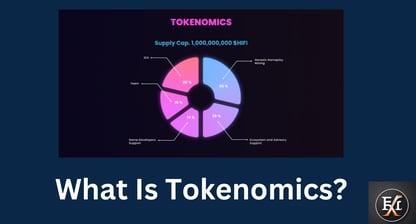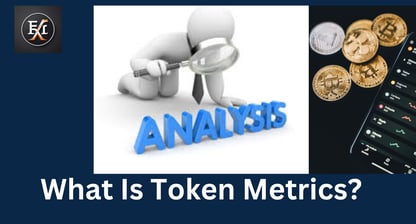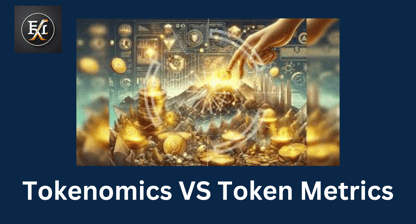Tokenomics


Tokenomics in cryptocurrency refers to the economic system and principles governing a particular cryptocurrency or token. It encompasses various factors that influence the supply, demand, utility, and value of the token within its ecosystem. Tokenomics is crucial for understanding how a cryptocurrency functions and how it might be perceived and valued by investors and users. Here are key aspects of tokenomics:
Components of Tokenomics:
Token Supply:
Total Supply: The maximum number of tokens that will ever exist.
Circulating Supply: Tokens that are currently in circulation and available on the market.
Token Distribution:
Initial Distribution: How tokens were initially distributed (e.g., ICO, airdrop, pre-mine).
Emission Rate: If the token has inflationary characteristics, how new tokens are created and distributed over time.
Token Utility:
Use Case: The purpose of the token within its ecosystem (e.g., transaction fees, governance, access to services).
Utility in DeFi: Tokens used for liquidity provision, yield farming, lending, etc.
Token Governance:
Voting Rights: Whether token holders have voting rights to influence protocol upgrades, changes, or decisions.
Decentralized Autonomous Organization (DAO): Tokens used to govern and manage decentralized organizations.
Token Economics:
Scarcity: Tokens with limited supply can potentially increase in value due to scarcity.
Incentives: Mechanisms to encourage certain behaviors (e.g., staking rewards, yield farming incentives).
Burn Mechanisms: Tokens may be burned (destroyed) to reduce supply and potentially increase value.
Market Dynamics:
Market Demand: Factors influencing demand for the token, such as adoption, partnerships, and speculative trading.
Token Liquidity: Availability of tokens on exchanges and liquidity pools.
Importance of Tokenomics:
Investor Confidence: Clear and well-defined tokenomics can enhance investor confidence and attract investment.
Value Proposition: Defines the token’s value proposition and its potential use cases.
Economic Sustainability: Ensures the long-term viability and sustainability of the cryptocurrency project.
Market Perception: Influences how the token is perceived in the market and its price dynamics.
Understanding tokenomics is essential for investors, developers, and users alike as it provides insights into how a cryptocurrency operates economically and what factors can affect its value and adoption over time.
Token Metrics


Token metrics refer to the quantitative data and metrics used to evaluate and assess the characteristics, performance, and potential of a cryptocurrency token. These metrics provide valuable insights into various aspects of the token's economics, market dynamics, and investment attractiveness. Token metrics are crucial for investors, analysts, and project teams to make informed decisions. Here are some common token metrics used in cryptocurrency:
Common Token Metrics:
Market Capitalization:
Definition: The total market value of a cryptocurrency, calculated by multiplying the current price per token by its circulating supply.
Importance: Indicates the relative size and valuation of the token compared to other cryptocurrencies.
Token Supply:
Total Supply: The maximum number of tokens that will ever exist.
Circulating Supply: Tokens currently available and in circulation.
Importance: Helps understand the token's scarcity and potential impact on price dynamics.
Token Distribution:
Initial Distribution: How tokens were initially distributed (e.g., ICO, airdrop, pre-sale).
Vesting Schedules: If tokens are subject to vesting periods for founders, team members, or early investors.
Importance: Indicates the fairness and transparency of initial distribution and potential impact on token liquidity.
Utility Metrics:
Use Case: The purpose of the token within its ecosystem (e.g., transaction fees, governance voting, staking rewards).
Adoption Metrics: Metrics related to token usage and adoption within decentralized applications (dApps) or platforms.
Importance: Evaluates the token's utility and potential for real-world application and demand.
Token Economics:
Inflation Rate: If applicable, the rate at which new tokens are created (e.g., through mining, staking rewards).
Deflationary Mechanisms: Token burning or other mechanisms to reduce supply.
Importance: Affects token scarcity, inflationary pressures, and long-term value proposition.
Market Metrics:
Trading Volume: The total amount of tokens traded on exchanges within a specific period.
Price Performance: Historical price data, including price changes, volatility, and trends.
Importance: Indicates market liquidity, investor sentiment, and price discovery.
Community and Network Metrics:
Community Size: Number of active users, followers on social media, and engagement levels.
Developer Activity: Metrics related to code commits, updates, and contributions on platforms like GitHub.
Importance: Reflects project engagement, community support, and ongoing development efforts.
Importance of Token Metrics:
Investment Decision Making: Helps investors assess the potential profitability and risks associated with investing in a particular token.
Project Evaluation: Assists analysts and researchers in evaluating the strength, viability, and sustainability of cryptocurrency projects.
Transparency and Accountability: Provides transparency into token distribution, economics, and governance, fostering trust among stakeholders.
Overall, token metrics provide a quantitative framework for evaluating cryptocurrency tokens, enabling stakeholders to make informed decisions based on data-driven insights into market dynamics, token economics, and project fundamentals.
Tokenomics VS Token Metrics


The terms "tokenomics" and "token metrics" are related but distinct concepts in the context of cryptocurrency and blockchain projects:
Tokenomics:
Definition: Tokenomics refers to the economic system and principles governing a particular cryptocurrency or token. It encompasses the overall design, structure, and mechanics of how the token operates within its ecosystem.
Focus: Tokenomics focuses on the broader economic aspects of the token, including its supply dynamics, utility, incentives, governance mechanisms, and economic sustainability.
Purpose: The primary purpose of tokenomics is to define and understand how the token is created, distributed, utilized, and valued within its ecosystem. It provides insights into the token's long-term viability and economic model.
Token Metrics:
Definition: Token metrics refer to the quantitative data and metrics used to evaluate and analyze specific characteristics, performance, and potential of a cryptocurrency token.
Focus: Token metrics focus on specific quantitative measures such as market capitalization, circulating supply, trading volume, price performance, community size, developer activity, and adoption metrics.
Purpose: The purpose of token metrics is to provide detailed insights and measurable data points that help stakeholders (investors, analysts, developers) assess the token's market dynamics, investment attractiveness, liquidity, and overall health.
Key Differences:
Scope:
Tokenomics is broader in scope, encompassing the overall economic design and principles governing the token.
Token metrics are specific quantitative measures used to assess various aspects of the token's performance and market dynamics.
Nature:
Tokenomics is more qualitative and conceptual, focusing on economic theories and principles applied to the token.
Token metrics are quantitative and empirical, providing measurable data points and metrics for analysis.
Application:
Tokenomics guides the design and implementation of the token's economic model and ecosystem.
Token metrics are used for evaluation, comparison, and decision-making by stakeholders interested in understanding the token's market position and potential.
In summary, while tokenomics sets the foundational economic principles and structure of a cryptocurrency token, token metrics provide the specific quantitative data and metrics used to evaluate its performance, market dynamics, and investment potential. Together, they provide a comprehensive framework for understanding and assessing cryptocurrency tokens in the blockchain ecosystem.
